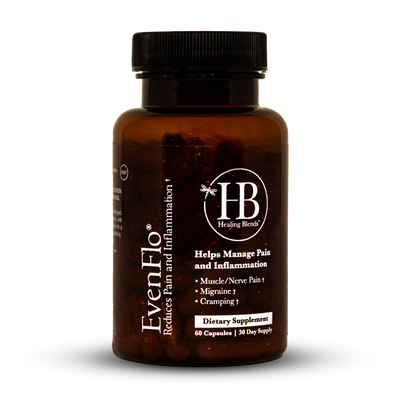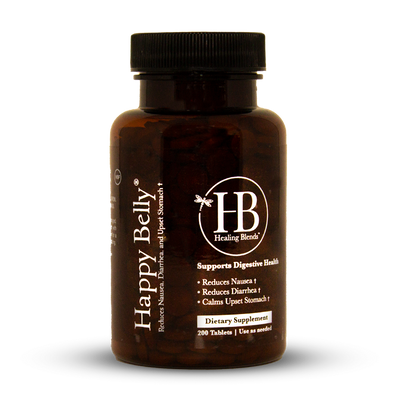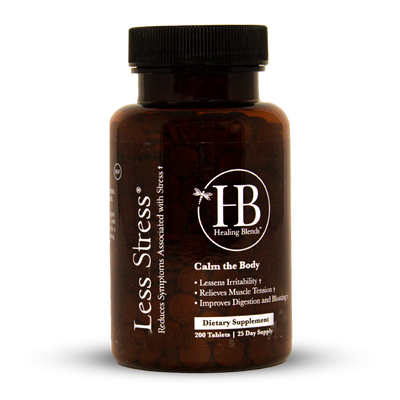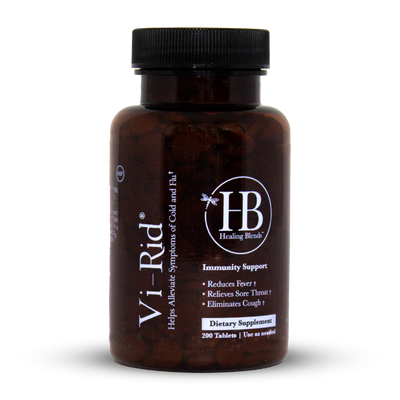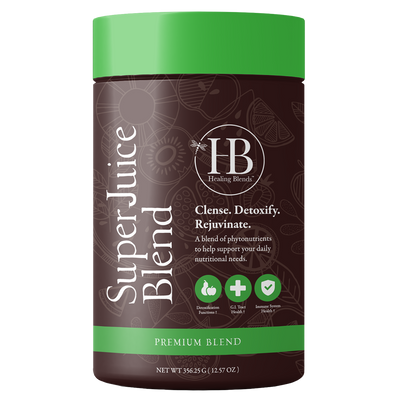Healthy Food Swaps: Here’s Why You Crave Comfort Foods & How You Can Make Them Healthier
Right now, most activities are off-limits and our social lives have been shaken beyond belief. It’s no wonder most of us are finding pleasure in the one thing we have access to: food.
The Food Industry Association says that Americans bought 50% more snacks and treats in March 2020 than they did a year ago. Aside from indulging in store-bought snacks, thousands of people are also making their own comfort foods like homemade bread as a means to bust stress during these trying times.
So why is it that comfort foods comfort us? The simple explanation is because they ignite a sense of nostalgia and trigger positive memories. Research suggests that comfort food makes people feel more connected to others (even when they’re alone) and that’s why food goes way beyond just the taste sensation.
Understanding the Science Behind Comfort Food In Times of Crisis
At the moment, we’re all in need of some kind of comfort, and since most of us can’t be comforted on a physical level, it’s easier to get it from a slice of freshly baked bread or a chocolate bar.
The New York Times recently reported that people are buying much more processed and packaged goods during the global pandemic. We’re also reaching for familiar staples like Mac & Cheese and ready-to-eat Chicken Noodle Soup, flavors that transport us back to better days. Smells are processed in the olfactory lobe, which reaches the limbic system where emotions and memory are dealt with, and that’s why eating certain foods makes us feel better.
Whenever we’re stressed or anxious, we use food to regulate our feelings. And yes, we also participate in comfort eating to celebrate good times. But it’s interesting to note which specific cravings we get when we’re stressed. The craving for sugar during times of stress seems to be connected to energy signaled by the sweetness which helps the body deal with stressors.
The downside of traditional comfort foods like chocolate and casseroles is that their “highs” are often short-lived. Most comfort foods aren’t nutritionally balanced, and if we don’t keep tabs on how much of what we’re eating, our snacking behavior can incur some health costs.
But is there a way to indulge in comfort foods without having to worry about weight gain or negative effects on our health? The secret lies in smart food swaps!
How Can I Replace Comfort Foods with Better Options without Losing the Sense of Relief?
It’s a challenge to eat healthy at every meal. But it’s much easier to replace some of your pantry staples with healthier options.
We all tend to reach for whatever is on hand when we’re hungry. And by keeping healthy swaps around, you’re setting yourself up for nutritional success.
Healthy food swaps aim to balance your diet and make you opt for nutritional choices more often. Here’s a list of comfort food replacement hacks to make healthy eating that much easier!
Zoodles Instead of Noodles
It might be tricky to find healthy pasta alternatives in the grocery store, but zoodles are a great (healthier) alternative than pasta. Zoodles are noodles made from spiralized zucchini, and even though they don’t taste quite like actual pasta, they’re great if you’re not too picky when it comes to texture. If you’re not a massive fan of zucchini, you can spiralize sweet potatoes or carrots, and if you’re looking for a quick replacement for spaghetti, why not consider spaghetti squash!
Nutritional Facts:
Compared to regular pasta, one big cup of zoodles contains 30-40 calories versus spaghetti that has 210 calories per cup! Zoodles contain 5 grams of net carbs per cup whereas pasta contains 40 grams of carbs.
Quinoa Instead of White Rice
Even though white rice isn’t a bad food choice, it is higher in calories and carbohydrates than quinoa. Quinoa also packs an extra fiber punch and offers more protein and minerals like zinc and iron than white rice. Despite its grainy texture, quinoa actually comes from the same family as spinach and beets and makes for a great food swap in many comfort food recipes.
Nutritional Facts:
White rice contains 40 more calories and 15 times the carbs per cup than the same amount of quinoa. One cup of quinoa has twice as much protein and 5 grams of fiber more than the same amount of rice.
Coconut Oil Instead of Butter or Vegetable Oil
Great for sautéing vegetables and cooking at high temperatures, coconut oil also contains medium-chain triglycerides (MCTs) that give you a quick boost of energy. It’s great when used in keto coffee recipes and you can use it to pop your popcorn too!
Nutritional Facts:
Swapping your vegetable oil or butter for coconut oil isn’t so much for the sake of slashing calories, because there isn’t a whopping difference between the two, but it does hold a lot of health benefits. Virgin coconut oil is high in saturated fats and also contains lauric acid, a type of fat that can raise good cholesterol levels.
Dairy-Free Yogurt (Coconut, Almond, or Soy) Instead of Sour Cream
A baked potato with sour cream is a super comforting snack, but it’s loaded with a sinful amount of calories too. Swapping your sour cream with dairy-free yogurt is a high-protein food swap that’ll also boost your probiotic intake to support healthy digestion.
Nutritional Facts:
Dairy-free yogurt is lower in calories and fat and higher in protein than sour cream. One ounce (28 grams) of dairy-free yogurt contains only 7 calories and 3 grams of fat. The same amount of sour cream contains 54 calories and 6 grams of fat.
Almonds Instead of Croutons
Croutons are heavenly in a salad, but aside from the crunch, they don’t offer us much more. Almonds, on the other hand, contain 13 vitamins and minerals including magnesium, calcium, potassium, and vitamin E. They’re also crammed full of fiber and protein! Next time you want to add some crunch to your salad, try tossing some almonds in your favorite seasoning and use them instead of stale bread.
Nutritional Facts:
1 cup of croutons (30 grams) contains around 122 calories, 2 grams of fat, and as much as 22 grams of carbohydrates. Almonds, on the other hand, contain about 167 calories per 30 grams, which sounds worse than croutons, but they also just 1 gram of sugar, no starch (carbs), and an additional 5 grams of protein and 4 grams of dietary fiber.

Source: Cookinglight
Coconut Flour Instead of Regular Flour
Wheat flour alternatives are great food swaps, even if you aren’t on a gluten-free diet. Almond flour is made from finely ground coconut meat and has fewer carbohydrates than other nut-based flours. It also contains more fiber than regular flour and much more protein.
Nutritional Facts:
Almond flour contains 640 calories per cup and around 24 grams of carbs, 12 grams of fiber, and 24 grams of protein. Regular white flour has fewer calories (601) per cup but packs a punch of as much as 122 grams of carbs and just 7 grams of fiber compared to the same amount of almond flour. Almond flour is a great option if you’re trying to reduce carbohydrates in your diet to trim down your meals.
Himalayan Salt Instead of Table Salt
Pink Himalayan rock salt is mined from an ancient seabed and is mostly made up of sodium chloride and 84 extra trace elements and minerals. With less sodium per teaspoon than table salt, this is a healthy food swap with a saltier taste, which will help you cut down on your salt intake.
Nutritional Facts:
Just like the swap with oils, swapping your regular table salt for Himalayan salt might not be able to help you lose weight, but it does offer health benefits. Himalayan salt is much lower in sodium than table salt and is also not nearly as processed as regular table salt. Himalayan salt also contains much more magnesium, potassium, and iron than table salt, making it a safer choice than regular table salt.
Popcorn Instead of Potato Chips
A small portion of potato chips (give or take 15 chips) contains 149 calories, 9.5 grams of fat, and 15 grams of carbohydrates. When was the last time you counted every chip you ate? When you swap your potato chips for popcorn, you can munch down almost 5 cups of popcorn and still eat fewer calories than you would with a small serving of potato chips. With just 31 calories per cup, it’s a healthier snack option than most other packaged salty snacks on the shelves.
Nutritional Facts:
Potato chips contain 536 calories per 100 grams, 35 grams of fat, and 53 grams of carbohydrates. Popcorn, on the other hand, contains just 375 calories, 4,3 grams of fat, and 42 grams of carbohydrates per 100 grams.
Cocoa Nibs Instead of Choc Chips
Instead of using processed, sugary chocolate chips in your baked goodies, replace them with cocoa nibs for a healthier option. Cocoa nibs are nutritional powerhouses that contain a bunch of antioxidants, fiber, iron, and magnesium.
Nutritional Facts:
Cocoa nibs contain just 175 calories, 3 grams of protein, 15 grams of fat, and 5 grams of fiber per cup. Chocolate chips, on the other hand, can pack a punch of up to 899 calories, 13 grams of protein, 50 grams of fat, and 100 grams of carbohydrates per cup.

Cocoa Nib & Sea Salt Shortbread. Get Recipe Here
Raw Almond Butter Instead of Store-Bought Peanut Butter
These two might be similar in calorie count, but the PB you buy off the shelf contains hydrogenated vegetable oils and way too much added sugar. Unprocessed almond butter contains many more vitamins and minerals and less saturated fats. This choice is higher in fiber and has less sugar per serving than traditional peanut butter.
Nutritional Facts:
Raw almond butter doesn’t contain hydrogenated vegetable oils or added sugar. It is also a rich source of vitamins, minerals, and fiber, making it a healthier choice than store-bought peanut butter.
Tea Instead of Soda

You already know that soda isn’t the best beverage out there, but perhaps you’re not clear on just how bad it is. A regular can of soda contains as much as 37 grams of sugar and 155 calories, and the diet variety isn’t a better choice either. Why not try reaching for antioxidant-rich tea instead? You can drink your tea hot or cold and depending on what time of the day it is you can opt for caffeinated or decaf tea.
Nutritional Facts:
If you’re having plain tea, you’ll be consuming just 2 calories per cup, making it just as good as water. Soda, on the other hand, contains as much as 138 calories per can, 35 grams of carbohydrates, and 33 grams of sugar.
Coconut Water Instead of Sports Drinks
While we’re on the topic of soda, sports drinks are another major offender. You really don’t need to be consuming 34 grams of sugar with just one serving of this drink. If you want a pick-me-up during physical activities, coconut water is nature’s top choice. One cup of coconut water contains 600mg of potassium and also packs the added punch of calcium, phosphorus, natural sodium, and magnesium - which are all electrolytes.
Nutritional Facts:
One cup of coconut water contains 46 calories, 9 grams of carbs, and 3 grams of fiber. Sports drinks can contain up to 80 calories per cup, 7 grams of protein, and 34 grams of sugar!
Conclusion
You don’t need to go on a crash diet or eliminate all your favorite foods in order to eat healthier. It’s really as simple as making a few small changes so that you can get closer to your nutritional and wellness goals.
By using these smart food swaps, you can still make (and indulge in) your favorite comfort foods that’ll help boost your mood and morale, without interfering with your health or weight.
Resources:
- Quinoa vs Rice via Healthline
- The Health Benefits of Greek Yogurt via U.S News Health
- Health benefits of pink Himalayan salt via Medical News Today
- The neuroprotective effects of cocoa flavanol and its influence on cognitive performance via US National Library of Medicine
- Stop drinking soda for (your own) good via CNN
- New York Times – Incline in the purchase of processed foods
- Smells processed on olfactory centre
- Sugar stress connection
- Americans buying 50% more snacks than a year ago













